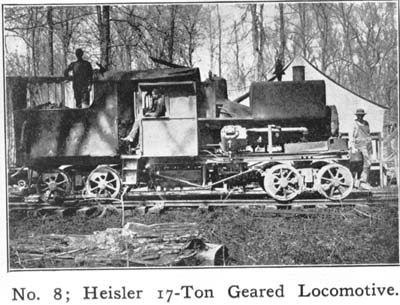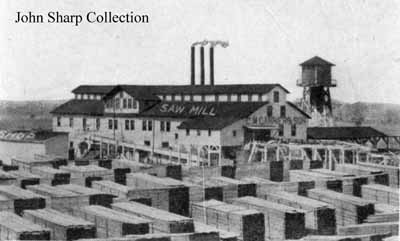
Sardis & Delta Railroad
C. M. Carrier & Son
Carrier Lumber & Manufacturing Co.
|
Standard Gauge, 60 lb. rail Headquarters: Sardis, Miss. Officers (): Mill capacity: 75,000 ft/day in 1917 Years of Operation: 1900-1928 Miles Operated: Locomotives Owned: |
Equipment
|
Click Map for Larger Version Google Earth Map HERE |
|
Before railroad development opened up the region, the area
known as the Mississippi Delta was covered in virgin hardwood forests.
The area between the Yazoo and Mississippi Rivers, and between Memphis
and Vicksburg is generally a flat alluvial flood plain interspersed
with many meandering rivers and bayous. Even though there were some
cotton plantations in the region, it wasn’t until the building of
the railroads that region began to develop. The Illinois Central
mainline between Jackson, Grenada and Memphis skirted well east of the
delta region. The Louisville, New Orleans & Texas RR was built
through the heart of the region in 1882-4, and acquired by IC
subsidiary Yazoo & Mississippi Valley in 1892. Y&MV built a
network of branch lines throughout the delta. As railroads were built
in the region, timberland was bought by lumber companies and sawmills
built in the region. Land was cleared and cotton planted in the rich
soil in the region. Few people today realize the area once was home to
many sawmills and logging railroads.
The Sardis and Delta Railroad was one such line that was built
as a logging railroad. The owners came south to Mississippi as the
great white pine and hemlock forests of the northeast were depleted.
Even though the railroad lasted almost 30 years, far longer than most
logging railroads in the region, it eventually met the same fate as
the rest after the timber was cut.
The story begins as C. M. Carrier’s hemlock sawmill at
Carrier, Pennsylvania, cut out and closed in 1897. As an investment,
Carrier purchased a tract of 35,000 acres of hardwood timber land in
Panola and Quitman Counties, Mississippi. After a cruise was made to
determine the value and quality of the timber, Carrier decided to
build a sawmill to cut this timber instead of selling it as originally
planned. The business was known as C. M. Carrier & Son. A single
band sawmill was built on the south side of Sardis, a town on the
Illinois Central mainline. This mill opened in September 1901, and had
a capacity of 60,000 feet of lumber per day. The plant also had the
standard auxiliary equipment- a planing mill, dry kiln, and electric
light plant. Later a hardwood flooring factory, veneer mill, and box
factory were added.
As the timber was located in the flat bottoms several miles
west of Sardis, a railroad was necessary to bring the logs to the
sawmill. The Sardis & Delta Railroad was incorporated on December
13, 1900, and built westward to the timber holdings in 1901-2. The
railroad’s capital stock of $100,000 was issued to the parent lumber
company in payment for the property. The standard gauge railroad was
built westward through rolling hills as economically as possible to
reach the edge of the company timber holdings in the flat delta. With
a minimum of grading, the line was curvy and hilly. Grades on this
section were up to 2 per cent. The railroad was laid with new 60-pound
rail. Ballast was minimal- dirt with a few stretches of cinder
ballast. A logging camp was built at Baptist, in the hills on the edge
of the delta, to avoid the mosquitoes prevalent in the swampy areas in
the delta.
The lumber company was officially incorporated as C. M. Carrier
& Co. in early February 1903. A year later R. M. Carrier, J. A.
Reichman, and W. B. Burke bought the interest of C. M. Carrier. In
1905 R. M. Carrier bought out his associates, and the name of the
company was changed to Carrier Lumber & Manufacturing Co. R. M.
Carrier served as president; A. P. Steele, secretary, and T. B.
McCormick, general manager.
By 1908, the railroad equipment of the Sardis & Delta
consisted of 3 locomotives, 60 log cars, 1 coach, and 3 flat cars. The
railroad extended 28 miles to a point known as Red Gum. Two short
branches extended from Red Oak to Dye and from Burke Jct. to Eckles,
each being about two and a half miles long. Logging spurs were built
from connections with the Sardis & Delta into company timber
holdings. The lumber company used oxen, horses, and mules in logging
operations, along with two Lidgerwood combination skidder-loaders. The
company was cutting cypress, oak, ash, gum, and hickory. In 1913, the
company purchased a 3-drum skidder from Clyde Iron Works. A McGiffert
loader was bought from the same firm in 1920.
By 1917, the mill capacity had been increased to 75,000 feet
per day, and a large logging camp was built at Lake Carrier, 21 miles
from Sardis.
By the late 1920's, the company was close to cutting out the
bulk of their timber holdings. The railroad was cut back to Baptist by
1927. In late 1928, the sawmill and logging railroad shut down. The
Sardis & Delta applied to the ICC on November 24, 1928, to abandon
the entire railroad. After the sawmill shut down, the railroad lost 90
per cent of its revenue. The land in the clay hills along the railroad
was not suited for farming. Permission for abandonment was granted on
January 29, 1929.
The sawmill got a second chance for life, however. The sawmill
was reopened on a smaller scale in November 1929 under new ownership
as the Carrier Lumber Co., but without the benefit of a logging
railroad. Logs were brought in by truck. It appears that the mill
continued to operate until July 1936. One of the Sardis & Delta
Porter 2-8-0's was kept around to switch the mill until this time. References 1 Research of Gilbert H Hoffman 2
"The Manufacture of Mississippi White Oak by the Carrier
Lumber & Mfg. Company at Sardis, Mississippi," American
Lumberman, April 18, 1908, pp. 71-87 (illustrated). 3
"Sardis & Delta Railroad Company," Valuation Docket
No. 135, Interstate Commerce Commission Reports, Vol. 108, pp.
287-294.
4
"Abandonment of Line by Sardis & Delta Railroad
Company," Finance Docket No. 7265, Interstate Commerce
Commission Reports, Vol. 150, pp. 358-360.
|
||
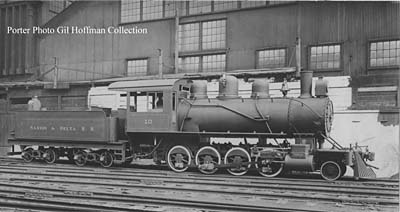
Brand new Porter 2-8-0 for Sardis & Delta Railroad |
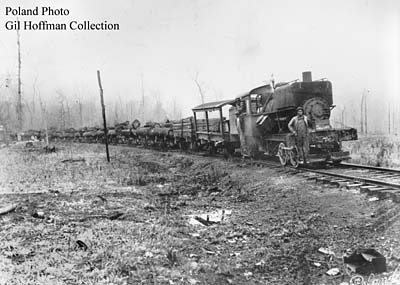
Sardis & Delta Heisler with log train west of Sardis
|
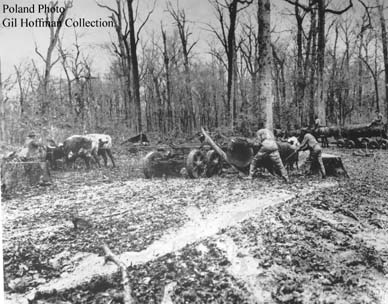
Loading a 8-wheel Lindsey log wagon using the crosshaul method. |
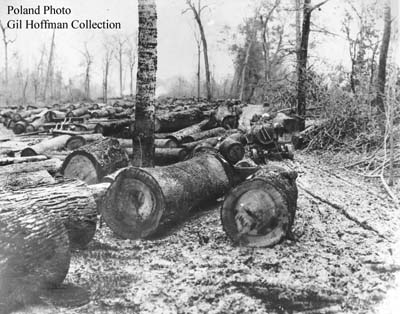
Logs being dumped next to rail spur. |
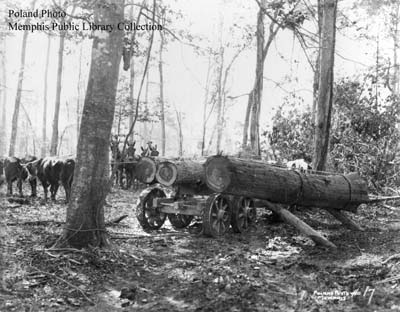
Loading a Lindsey wagon. |
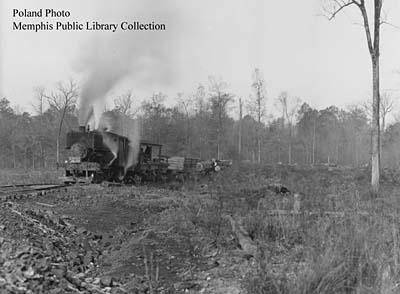
Sardis & Delta log train circa 1915. |
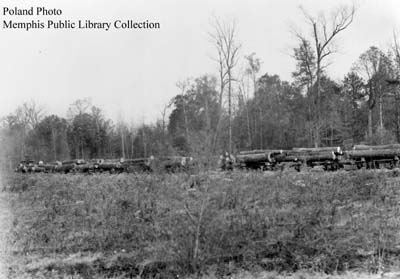
|
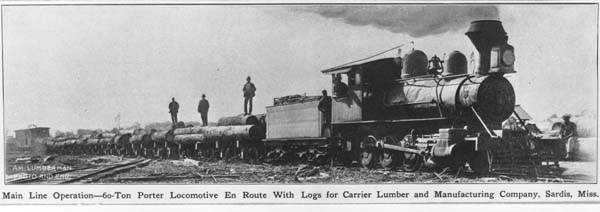
Porter 2-8-0 on log train in 1908. American Lumberman Photo Gil Hoffman Collection |
1908 American Lumberman Photo Gil Hoffman Collection |
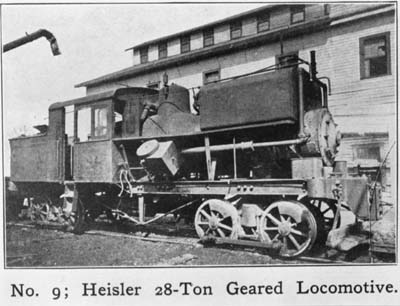
1908 American Lumberman Photo Gil Hoffman Collection |
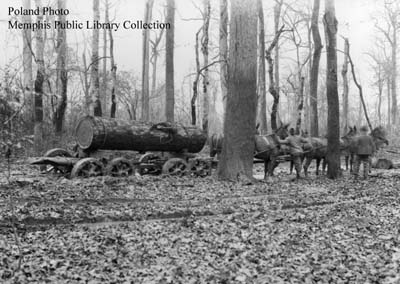
Notice the mud up to the axles on the log wagon. |
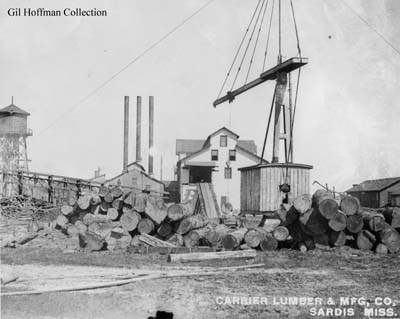 |
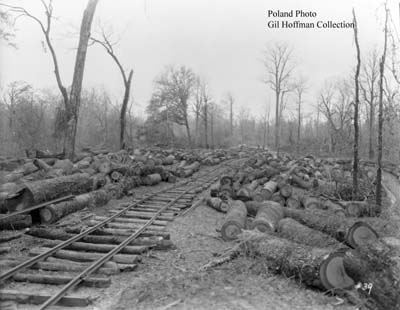
Typical crudely-built logging spur on the Sardis & Delta Railroad. |
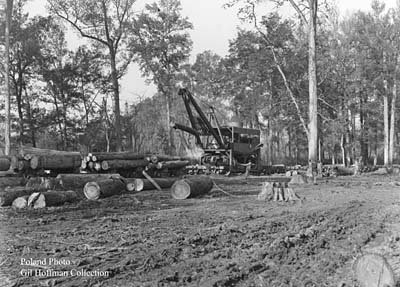
McGiffert log loader at work. |
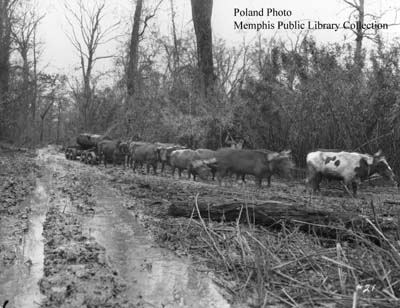 |
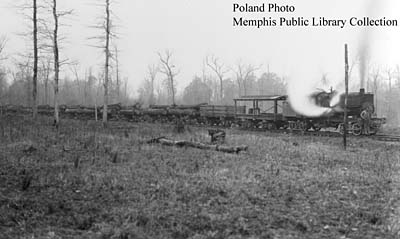
Heisler on Sardis & Delta log train circa 1915. |
Carrier & Son mill at Sardis |
 January 1915 Official Railway Equipment Register- Art Richardson Collection |
For more information contact Tony Howe at tonyhowe76@yahoo.com or David S. Price at davidsprice46@gmail.com
All content on Mississippi Rails website is copyrighted by us or the individual or institution noted on the image or accompanying text. Please contact us below for permission to use any image or information contained on this website. Mississippi Rails is not affiliated with any railroad.
©2009 Mississippi Rails

